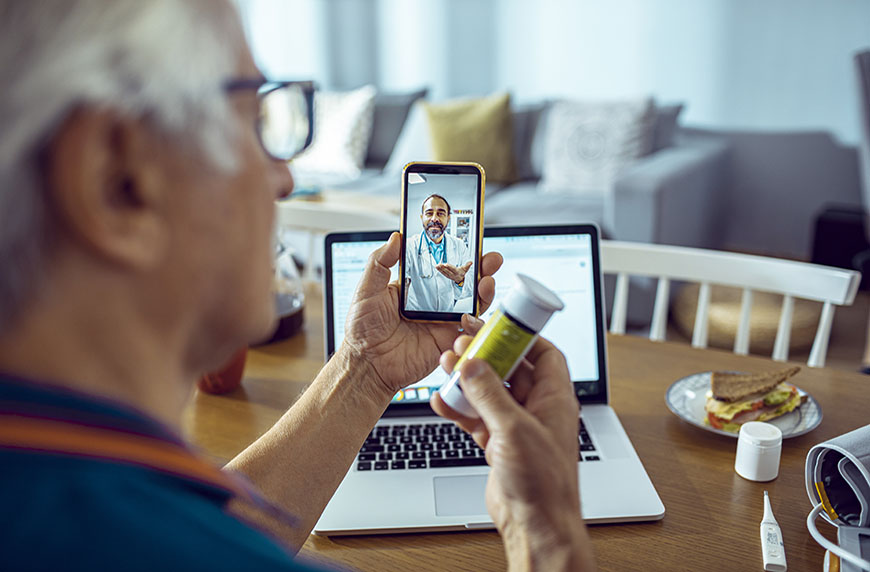The healthcare world has undergone a dramatic transformation, with telehealth evolving from a pandemic necessity into a cornerstone of modern medical practice. In 2025, virtual care represents far more than simple video consultations—it has become an intelligent, integrated ecosystem that leverages artificial intelligence, remote monitoring, and hybrid care models to deliver personalized, accessible healthcare.
With telehealth now accounting for 23% of all healthcare encounters nationwide, and the global market projected to surpass $175.5 billion by 2026, this digital revolution is reshaping how patients access care and how providers deliver services. The integration of cutting-edge technologies like AI-powered diagnostics, wearable devices, and predictive analytics is creating unprecedented opportunities for proactive, patient-centered care that transcends geographical boundaries and traditional healthcare limitations.
AI-Powered Virtual Care: The New Standard
Artificial intelligence has become integral to telehealth platforms, fundamentally changing how healthcare is delivered and experienced. In 2025, AI-powered virtual assistants provide patients with real-time, personalized health support, engaging in meaningful conversations and reminding patients of appointments, medication schedules, and lifestyle adjustments based on their health trends.
These intelligent systems enable healthcare providers to deliver faster, more accurate diagnoses and personalized treatment plans, improving patient outcomes while reducing costs. AI-driven diagnostic tools are transforming medical imaging and analysis, with algorithms capable of detecting diseases quickly and accurately by analyzing vast datasets.
This technology reduces human error, assists radiologists, and provides earlier intervention opportunities. Additionally, AI-powered chatbots handle initial patient interactions, collect symptoms, and triage queries before patients arrive, reducing physician workload without compromising care quality.
Remote Patient Monitoring: Proactive Healthcare Revolution
Remote Patient Monitoring (RPM) has evolved into a sophisticated system that transforms raw data from wearables into actionable insights. AI-powered analytics can detect patterns, flag risks, and prompt timely, personalized interventions, shifting care from reactive to proactive approaches. This integration reduces hospital readmissions and emergency visits while improving both patient and financial outcomes. The technology is particularly impactful in chronic disease management.
For mental health, AI-powered wearables and apps track behavioral patterns to detect early signs of depression and anxiety relapses. In cardiology, AI-enabled monitoring captures cardiac data while patients go about their daily lives, enabling clinicians to intervene before anomalies become serious conditions. Diabetes management benefits from AI integration with continuous glucose monitoring systems, enabling real-time analysis and automated insulin delivery based on continuous feedback.
Hybrid Care Models: The Future of Healthcare Delivery

Rather than replacing in-person care, telemedicine in 2025 has evolved to complement it through sophisticated hybrid models. These systems blend digital and face-to-face consultations to provide seamless, comprehensive patient experiences. Virtual-first healthcare models prioritize telehealth platforms for primary care and initial consultations before determining if in-person visits are necessary, reducing physical healthcare facility burden and costs while providing faster access to care.
Hospital-at-home programs are expanding rapidly, delivering acute care in patients’ homes and providing safer, more comfortable environments for recovery. This model has proven particularly valuable during emergencies and for managing chronic conditions that don’t require intensive hospital monitoring.
Enhanced Security and Global Accessibility
As telehealth platforms handle increasingly sensitive patient data, cybersecurity has become paramount. In 2025, robust encryption, blockchain technology, and biometric authentication are standard practices ensuring data privacy and compliance with regulations like HIPAA and GDPR. Blockchain technology specifically addresses the challenge of data security by ensuring encryption of patient data and fostering trust between doctors and patients.
Global telehealth networks are becoming more robust, enabling cross-border consultations and international virtual care. This expansion allows patients to access world-class specialists regardless of geographic location, democratizing healthcare access and enabling second opinions or specialized treatments unavailable locally.
Mental Health and Specialized Services
Telepsychiatry has experienced significant growth, with digital therapy apps, virtual counseling, and AI-driven mental health chatbots making mental health support more accessible while reducing associated stigma. This model connects patients with mental health professionals in convenient, private settings, removing traditional barriers such as travel time and waiting periods.
The expansion includes specialized telehealth services across various medical disciplines, with some specialties reporting virtual visit rates exceeding 50%. Enhanced 5G connectivity eliminates lag during video consultations and enables high-resolution imaging transfers, making telemedicine seamless for both providers and patients.

